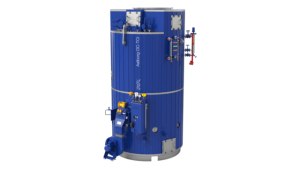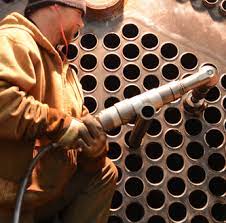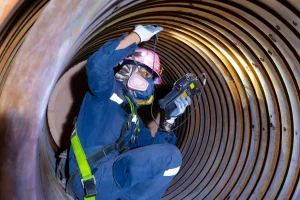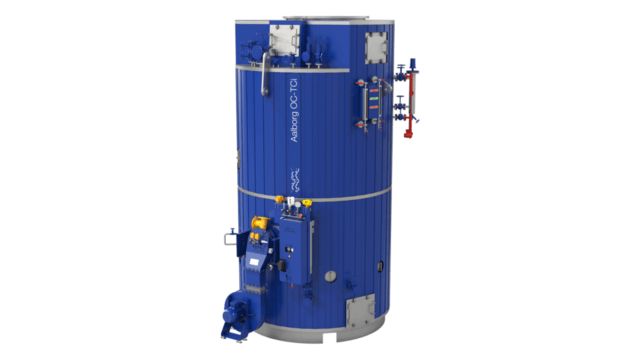Marine boilers are critical components of a ship’s engine room, responsible for generating steam used in propulsion, heating, and various onboard systems. Ensuring the safety of their construction, maintenance, and operation is essential for protecting crew members and the vessel itself. This article provides a detailed overview of safety measures for each phase, offering valuable insights for ship cadets, seafarers, and maritime professionals.
Safety in Construction
The construction of marine boilers must adhere to rigorous design and engineering standards. Material selection plays a crucial role, as boiler components must withstand high pressures and temperatures while resisting corrosion. Alloyed materials like carbon steel with chromium or molybdenum are often used to enhance durability. The selection process depends on operational requirements, such as temperature thresholds and exposure to saline environments.
Design specifications are equally important. Marine boiler designs must comply with international standards, including those outlined in SOLAS Chapter II-1 and classification societies like Lloyd’s Register and DNV GL. Factors such as pressure ratings, thermal efficiency, and safety margins are integral to the design process. Proper planning of the boiler’s location in the engine room is critical to ensure adequate access for maintenance. Piping systems must account for thermal expansion to prevent stress on components. Alignment and integration with other engine room systems must follow best practices for safety and efficiency.
Modern marine boilers are equipped with essential safety devices, including pressure relief valves, high-temperature alarms, flame detectors, and automated shutdown systems. Regular calibration and testing of these devices are necessary to ensure they function effectively under various operating conditions.

Safety in Maintenance
Regular maintenance is essential for ensuring the reliability and efficiency of marine boilers. Routine inspections are vital, using non-destructive testing (NDT) methods like ultrasonic or dye penetrant inspections to detect cracks or weaknesses in boiler components. These inspections help identify wear or damage in critical areas such as tubes, valves, and safety devices.
Cleaning procedures involve removing scale buildup from internal surfaces to maintain efficiency and reduce overheating risks. Approved cleaning chemicals or mechanical methods should be used based on boiler specifications to prevent damage.
Safety devices, such as pressure relief valves, flame detectors, and alarms, must be tested routinely to ensure functionality during emergencies. Proper testing and calibration ensure these devices operate effectively under emergency conditions.
Accurate documentation of maintenance activities is necessary for compliance with the ISM Code and to track the boiler’s performance over time. Predictive maintenance strategies, such as condition-based monitoring (CBM), rely on real-time data and predictive analytics to anticipate potential failures and ensure timely intervention. Training crew members is a critical aspect of maintenance safety. Comprehensive training should include detailed modules on maintenance procedures, safe handling practices, and emergency response protocols. Simulator-based training can further enhance crew preparedness.


Safety in Operation
The operational phase of marine boilers requires strict adherence to safety protocols to mitigate risks. Continuous monitoring of operational parameters, such as steam pressure, temperature, and water levels, is crucial. Integrating digital monitoring systems, such as SCADA or IoT-based solutions, provides remote oversight and early detection of potential issues.
Combustion control is vital to prevent hazardous conditions like explosions or fires. Maintaining proper air-fuel mixtures ensures safe combustion and reduces the risk of incidents. Monitoring exhaust emissions is essential for compliance with MARPOL Annex VI and to improve overall combustion efficiency.
Steam quality control involves implementing water treatment systems and maintaining deaerators to prevent scaling or corrosion and ensure high steam quality. These measures help maintain safe and efficient boiler operations.
Emergency procedures must be clearly defined and practised. Crews should be trained in emergency protocols, including boiler shutdowns, firefighting, and steam leak containment. Regular drills help familiarize crew members with potential scenarios, such as fires, steam leaks, or equipment failures, and improve their response effectiveness.
Scalding prevention is another critical aspect of operational safety. Measures such as proper insulation, protective barriers, and the provision of personal protective equipment (PPE) minimize exposure to high-temperature surfaces and steam leaks.
Practical Examples and Case Studies
Incorporating real-world examples of incidents and their resolutions enhances understanding and application of safety principles. For instance, a case study on over-pressurization caused by faulty relief valves can highlight the importance of routine testing and maintenance. Similarly, examples of successful implementation of predictive maintenance strategies demonstrate their effectiveness in preventing failures and ensuring boiler reliability.
Conclusion
The safety of marine boilers across construction, maintenance, and operation phases is a multifaceted responsibility requiring adherence to strict standards and best practices. Robust construction techniques involve the use of high-quality materials, compliance with international standards, and the integration of advanced safety devices. Diligent maintenance practices, including routine inspections, condition-based monitoring, and crew training, ensure the continued reliability and efficiency of boilers. Safe operational protocols, coupled with continuous monitoring and emergency preparedness, minimize risks and protect crew members. By implementing these measures and fostering a culture of safety onboard, ship operators can ensure compliance with international regulations, protect crew members, and enhance operational efficiency. Continuous education and training for maritime professionals remain paramount in promoting safer maritime operations and safeguarding lives at sea.


That`s good.
Great blog you have here but I was curious about if you knew of any
community forums that cover the same topics talked about in this article?
I’d really like to be a part of online community where I can get responses from other knowledgeable people that share
the same interest. If you have any suggestions,
please let me know. Appreciate it!
Hey! Would you mind if I share your blog with my facebook group?
There’s a lot of folks that I think would really appreciate your content.
Please let me know. Thank you
Do you mind if I quote a couple of your articles as long as I provide credit and sources back to
your webpage? My blog is in the very same area of interest as yours and my visitors would truly benefit from some of the
information you present here. Please let me know if this okay with you.
Thanks!
Hello there I am so happy I found your blog page, I really
found you by error, while I was browsing on Askjeeve for something else, Anyways I am here now and would just
like to say thanks for a remarkable post and a all round exciting blog (I also love the theme/design), I don’t have
time to read it all at the minute but I have book-marked it and also
included your RSS feeds, so when I have time I will be back to read much more, Please do keep up the fantastic jo.
Wonderful blog! I found it while browsing on Yahoo News. Do you have any tips on how to
get listed in Yahoo News? I’ve been trying for a while but
I never seem to get there! Appreciate it
You have made some good points there. I looked on the net to learn more about the issue and found most people will go along with your views on this web site.